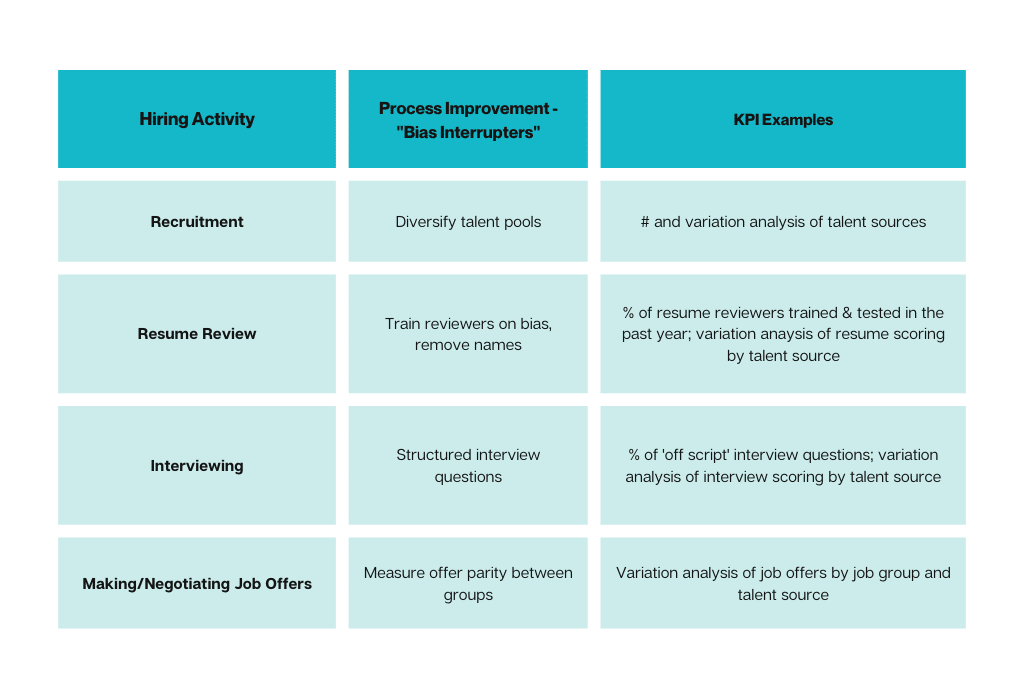Why is DEI so hard to “get right” at so many firms? This post explores what I believe is the single most important reason: measurement.
Before diving into the reason DEI is hard to get “right,” ask yourself, “is Diversity, Equity, and Inclusion (DEI) really all that important?” I say, “no doubt!” Google “DEI” and you’ll find three billion results. That’s right … 3 billion. Google “DEI in the workplace” and you’ll get twenty million.
Ask any Fortune 1000 CHRO and you’ll see DEI among the top of their priorities. Even the giant financial advisory firm Goldman Sachs featured DEI in their personal financial marketing content, “The pandemic and “Great Resignation” moved Diversity, Equity and Inclusion (DE&I) into the spotlight as employees reevaluated their priorities and unique needs—and employers responded…”
If it’s so important, why is so hard to get right? First, let’s set the record straight, a team of experts wrote in the Harvard Business Review (HBR), “More than 70% of organizational changes fail…”. That 70% includes DEI programming.
Knowing how hard organizational change is, what makes DEI especially difficult? In a word, transparency. It turns out that DEI is often treated differently because of the any given firm’s decision to NOT be transparent. That decision prevents the firm’s managers from using their ‘native process improvement skills’ to address DEI improvement.
What are ‘native process improvement skills’? These are methods like Lean Six Sigma and those championed by W. Edward Deming. Methods we take for granted. Managers use these tools daily to address sales, cost, IT, marketing, and capital budgeting. Managers know the drill: assess a problem, gather baseline data, implement change/programs/pilots, measure results, refine the programs, measure results; rinse and repeat. This cycle is the process improvement method generations of managers were taught and have been using to solve problems.
Why not do the same with DEI?
It’s not that we don’t know the issues and the remedies needed to improve DEI results … $8 billion a year is spent on DEI training! Without data to inform our programming, managers can’t make the progress they need to make. Managers know that talking doesn’t get it done. Managers are trained to plan their work and work their plan. Without transparent data, it is hard to plan.
Why can’t we use DEI data and metrics to inform our process improvement tools at many firms? One word: RISK. Too many firms are overly cautious about gathering DEI data and then sharing it with managers. Of course, the risk of data falling into the hands of a plaintiff’s lawyer is real, but when a firm uses that rationale to NOT provide managers with the data they need to measure, analyze, implement, and control HR related business processes, DEI programs are often doomed to fail.
To address this issue, Dolkas and Williams present in their March-April 2022 HBR article, Data-Driven Diversity, these concrete recommendations:
Pick the Right DEI Metrics – use outcome and process metrics. Outcome metrics are headcounts of underrepresented groups. Necessary, but not sufficient. Process metrics are the key. Dolkas and Williams suggest hiring, evaluation, promotion, and executive sponsorship metrics. Measuring speed of advancement up the corporate ladder or salary differential data are process metric examples. Consider this framework of HR processes and process KPIs
Determine Acceptable Risk – this is where employment lawyers earn their pay! This process entails:
- Assessing current risk tolerance of the executives. Some firms are very tolerant, and they see DEI as a core value and are willing to take on some risk – as long as they are educated about it. Some firms are unwilling to use metrics because they see the downside of bad results becoming public.
- When risk is viewed as too high by leadership, the ‘bias interrupters’ can still be used, but their effectiveness is often limited because the data around results is not shared thereby inhibiting the fine tuning of a program to create additional improvement.
- Make sure the CEO is involved in the risk assessment decision making and be transparent about the decision to share or not share and explain why. Dolkas and Williams recommend: “firms should be willing to risk as much in the DEI arena as they would in any other arena in which they have important business goals.”
Create a Plan for Action – these guidelines can work for firms with varying levels of risk.
- Be ready to act on what you find. Anticipate issues and create budget for responses. Fund the training and staff to manage and lead change. Be prompt in responding. Responses don’t have to be perfect.
- Start small. Pilots are an effective way to make progress without undue delay. Don’t try to ‘boil the ocean’. Progress on one dimension may require broad participation.
- Build the business case. Put the effort into making clear to stakeholders the ROI to be gained from DEI progress.
- Manage expectations. Share the roadmap, explain where the firm was at, where the firm is at now and where it is headed. Incremental and continous improvement is the key to all the best process improvement methods. DEI is not an exception.
- Manage access to the metrics. Risk tolerance will be the guide here, but firms are urged to carefully weigh some sharing vs. no sharing. Not every metric needs to be shared.
- Teach a DEI data protocol to managers. DEI is a serious matter and employment lawyers will have a view. How should DEI be talked about? What can be said in email? What kind of notes can be taken at meetings?
- Create a data-retention policy – the general rule is retain data only as long as it is needed to define a problem and measure remedy effectiveness.
- Be wary of relying on attorney client privilege. While some firms will frame critical documents to maximize the legal protections, Dolkas and Williams warn that too much legal overhead puts managers into a ‘defensive crouch’, limiting the effectiveness of some remedies.
The important take-away from Dolkas and Williams is to think carefully about the reasons why DEI can’t be part of your manager’s conventional goals and objectives. That means data and KPIs. Creating and sharing metrics is at the heart of a data driven DEI strategy.
We know from experience that when managers know how they are being measured, they respond. Let’s get DEI right by helping our managers get it right.



